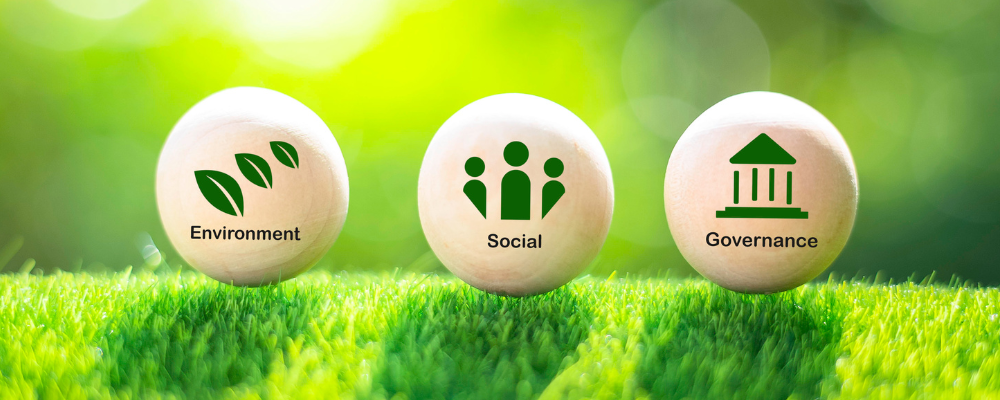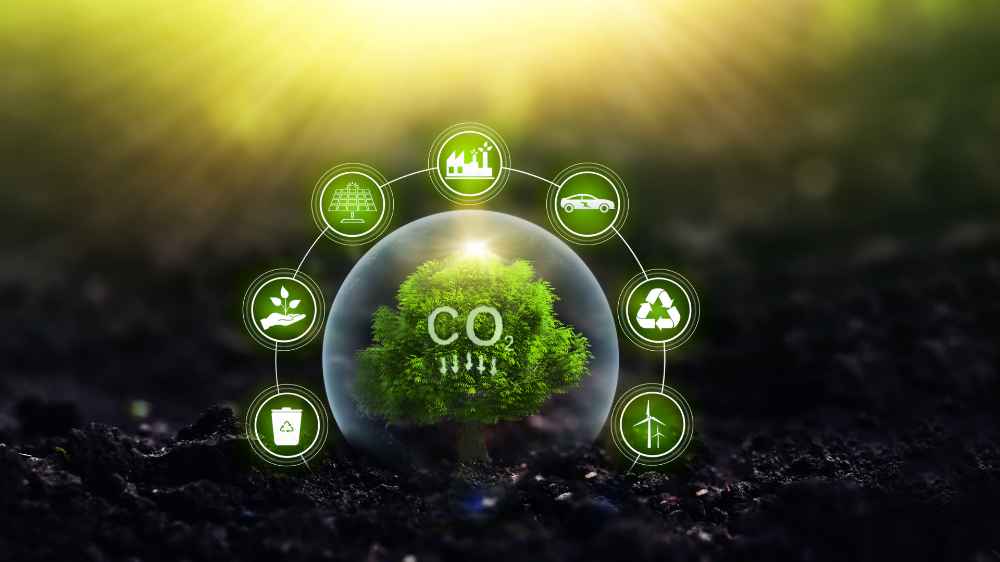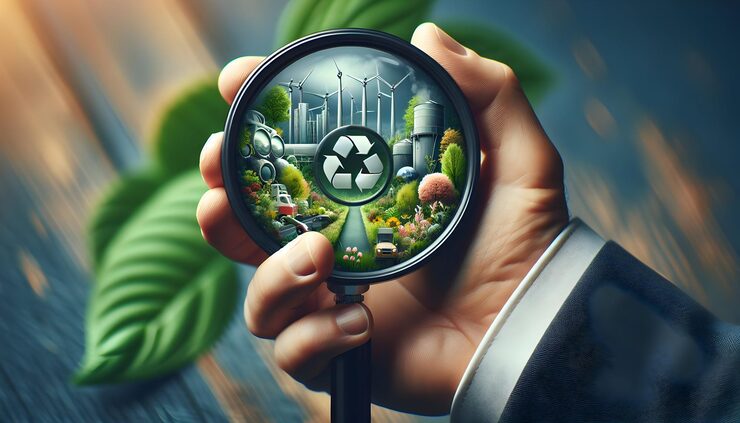Differences Between ESG, CSR, and Sustainability
A 2025 Guide for Indian Businesses

In 2025, terms like ESG, CSR, and sustainability are everywhere—boardrooms, investor pitches, and even customer chats. But what do they really mean, and how are they different? As India’s top 1,000 listed firms tackle SEBI’s BRSR mandates, the EU’s CBAM looms with $8 billion in tariffs, and $50 billion in ESG funds circle the market, clarity is critical. At WOCE, we’re breaking down ESG (Environmental, Social, Governance), CSR (Corporate Social Responsibility), and sustainability to help businesses navigate this green maze. From scope to impact, here’s how these concepts differ and why they matter for your bottom line.
Defining the Terms: What’s What?
Let’s start with the basics. Sustainability is the broadest concept, focusing on balancing environmental, social, and economic needs to thrive long-term without harming the planet. Think reducing emissions or ensuring fair wages—it’s about future-proofing. In India, sustainability gained traction with the 2023 Green Credit Programme, enabling businesses to earn tradable credits for eco-friendly actions.
ESG is a measurable framework for assessing a company’s performance in three areas: Environmental (e.g., emissions, water use), Social (e.g., labor practices, diversity), and Governance (e.g., anti-corruption, board transparency). It’s data-driven, tied to regulations like BRSR’s 140-question checklist, which 94% of top 300 firms nailed in FY 2023, cutting emissions intensity by 14% (industry reports).
CSR, rooted in India’s Companies Act 2013, mandates firms with certain profits to spend 2% on social good—think schools, healthcare, or disaster relief. Unlike ESG’s metrics or sustainability’s holistic scope, CSR is often philanthropic, focusing on community impact over core operations.
Scope and Focus: Where They Diverge
The biggest difference lies in scope. Sustainability is a mindset, guiding everything from product design to supply chains. A textile firm adopting water-efficient dyeing processes embodies sustainability, aligning with India’s Climate Finance Taxonomy draft (May 7, 2025, Business Standard) to fund green projects. It’s big-picture, voluntary, and spans decades.
ESG zooms in on specific, quantifiable metrics that investors and regulators scrutinize. SEBI’s BRSR, mandatory since FY 2022-23, demands Scope 1, 2, and (soon) 3 emissions data, plus social and governance KPIs. By 2027, BRSR Core will require third-party assurance, per SEBI’s March 28, 2025, circular. ESG’s focus is operational—how your business runs today, not just its future vision.
CSR is narrower, targeting external social contributions. A steel company building a rural school fulfills CSR but doesn’t address its emissions (an ESG issue) or long-term resource use (sustainability). CSR’s mandatory in India, but its scope is limited to compliance-driven projects, not systemic change.
Stakeholders and Drivers: Who Cares?

Stakeholders shape these concepts. Sustainability appeals to everyone—customers, employees, communities—because it’s about shared survival. In 2025, 80% of Indian Gen Z prefer sustainable brands, per surveys, pushing firms to rethink packaging or energy use. Sustainability’s driver is societal pressure and long-term viability, not just profit.
ESG is investor catnip. With $130 trillion in global net-zero capital (Glasgow Financial Alliance) and India’s ESG assets hitting $10 billion (May 2025 reports), funds like BlackRock demand ESG data. Regulators like SEBI and the EU (via CBAM, starting 2026) enforce compliance, making ESG a must for market access. It’s about accountability to shareholders and authorities.
CSR speaks to communities and regulators. India’s CSR spending hit ₹27,000 crore in FY 2023, per Ministry of Corporate Affairs data, funding education and health. While customers may applaud CSR, its primary driver is legal compliance, not investor or operational focus. A firm’s CSR report rarely sways a fund manager but can boost local goodwill.
Impact on Business Value: The ROI Angle
Each concept delivers value differently. Sustainability drives long-term growth by aligning with consumer trends and resource realities. A retailer switching to renewable energy cuts costs and wins Gen Z loyalty, boosting sales. Tata Power’s 2024 solar expansion, per company reports, slashed emissions and raised its market cap by 8%. Sustainability’s ROI is strategic, often realized over years.
ESG offers immediate financial perks. ESG-compliant firms enjoy 10-20% lower borrowing costs, per RBI data, as banks prioritize green loans. Infosys, a Dow Jones Sustainability Index member, saw investor confidence soar with BRSR-compliant emissions data. Despite $6.1 billion in global ESG fund outflows (Morningstar, April 30, 2025), India’s ESG leaders attract $50 billion in funds. ESG’s ROI is measurable—higher valuations, lower risks.
CSR builds reputational capital but rarely moves the financial needle directly. A pharma firm’s CSR-funded clinic may earn community trust, but it doesn’t address CBAM’s $8 billion tariff threat or investor demands for Scope 3 data. CSR’s ROI is softer—brand equity and regulatory goodwill, not operational efficiency.
Overlaps and Synergies: Where They Connect

While distinct, these concepts overlap. A sustainability initiative, like reducing water use, can feed into ESG metrics (environmental KPIs) and even CSR if it benefits local communities. For example, a cement firm’s water conservation project could lower its BRSR-reported water footprint, attract ESG investors, and qualify as CSR if it supports farmers. The EU’s anti-greenwashing rules (May 21, 2025, Lexology) demand authenticity across all three, pushing firms to align efforts.
Tools like WOCE’s esgpro.ai can bridge gaps, automating BRSR data collection to capture sustainability and CSR activities. A single dashboard can track emissions (ESG), community projects (CSR), and long-term goals (sustainability), streamlining reporting and boosting credibility.
Why It Matters in 2025: The Indian Context
India’s 2025 landscape makes clarity urgent. SEBI’s supply chain ESG rules (March 28, 2025) and CBAM’s tariffs demand robust ESG data. Sustainability aligns with India’s net-zero 2070 goal, while CSR keeps firms compliant with the Companies Act. Misunderstanding these can lead to greenwashing—335 EU funds rebranded in May 2025 to avoid scrutiny. Even global shocks, like Trump’s $2.65 billion Harvard funding cut (May 13, 2025, Fox News), highlight the need for local ESG leadership to fill research gaps.
Getting Started: Your Action Plan
Confused? Start simple. For sustainability, set long-term goals like 20% emission cuts by 2030. For ESG, collect Scope 1-3 data and prepare for BRSR Core’s 2027 audits. For CSR, align projects with community needs but don’t stop there. Integrate all three—use sustainability to guide strategy, ESG to satisfy investors, and CSR to build goodwill. WOCE’s esgpro.ai can help, automating ESG reporting to reflect your sustainability and CSR wins.
The payoff? Investors, customers, and regulators will notice. In India’s $5 trillion economy by 2030, clarity on ESG, CSR, and sustainability is your edge.
Conclusion: Know the Difference, Win the Game
In 2025, ESG, CSR, and sustainability aren’t interchangeable—they’re complementary. Sustainability sets your vision, ESG proves your performance, and CSR strengthens your community ties. From BRSR to CBAM, mastering these concepts drives profit, trust, and resilience. WOCE’s here to guide you.
Ready to lead with clarity? Contact WOCE at contact@worldofcirculareconomy.com to align ESG, CSR, and sustainability for success. Make 2025 your greenest year yet!




